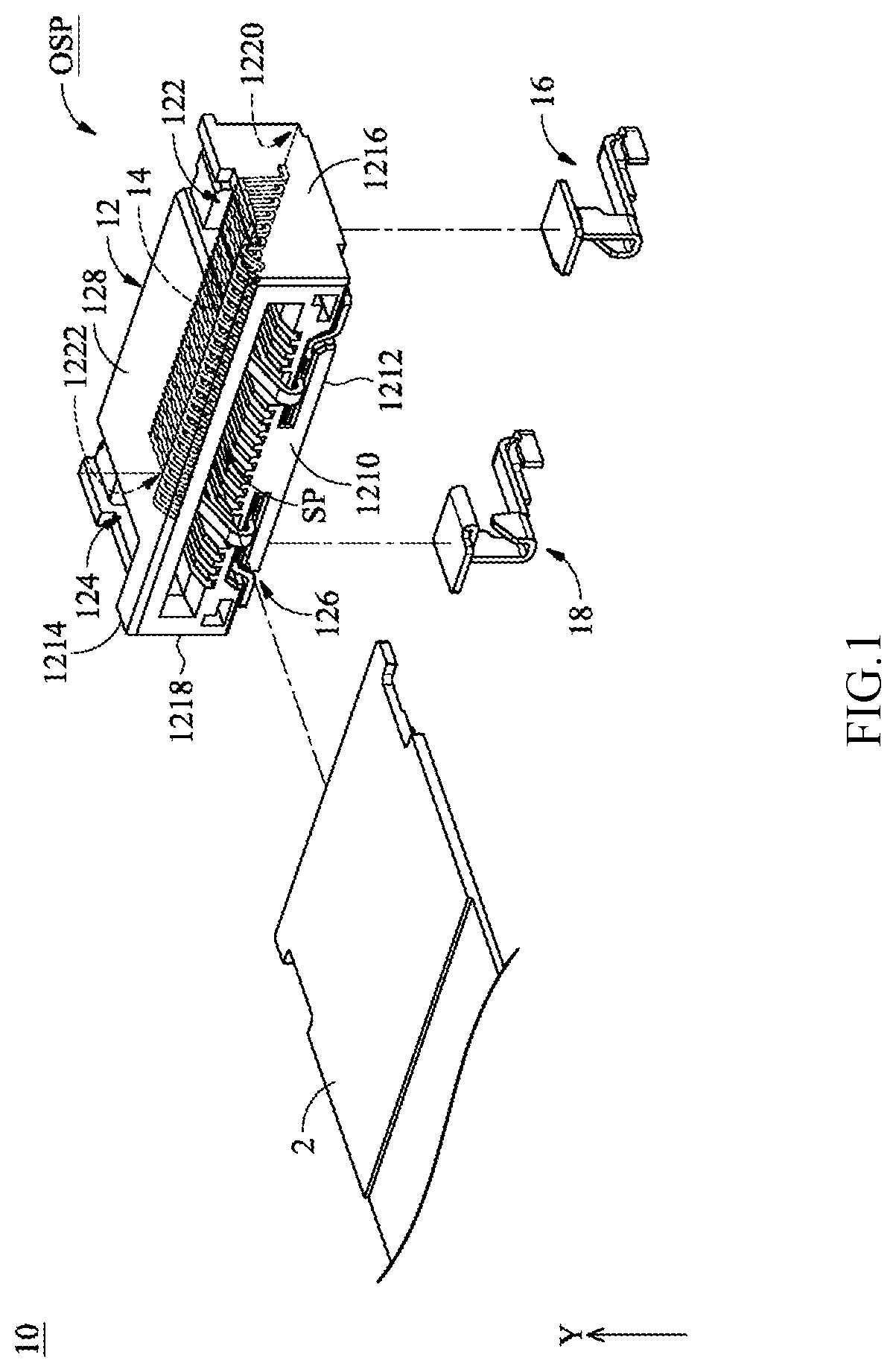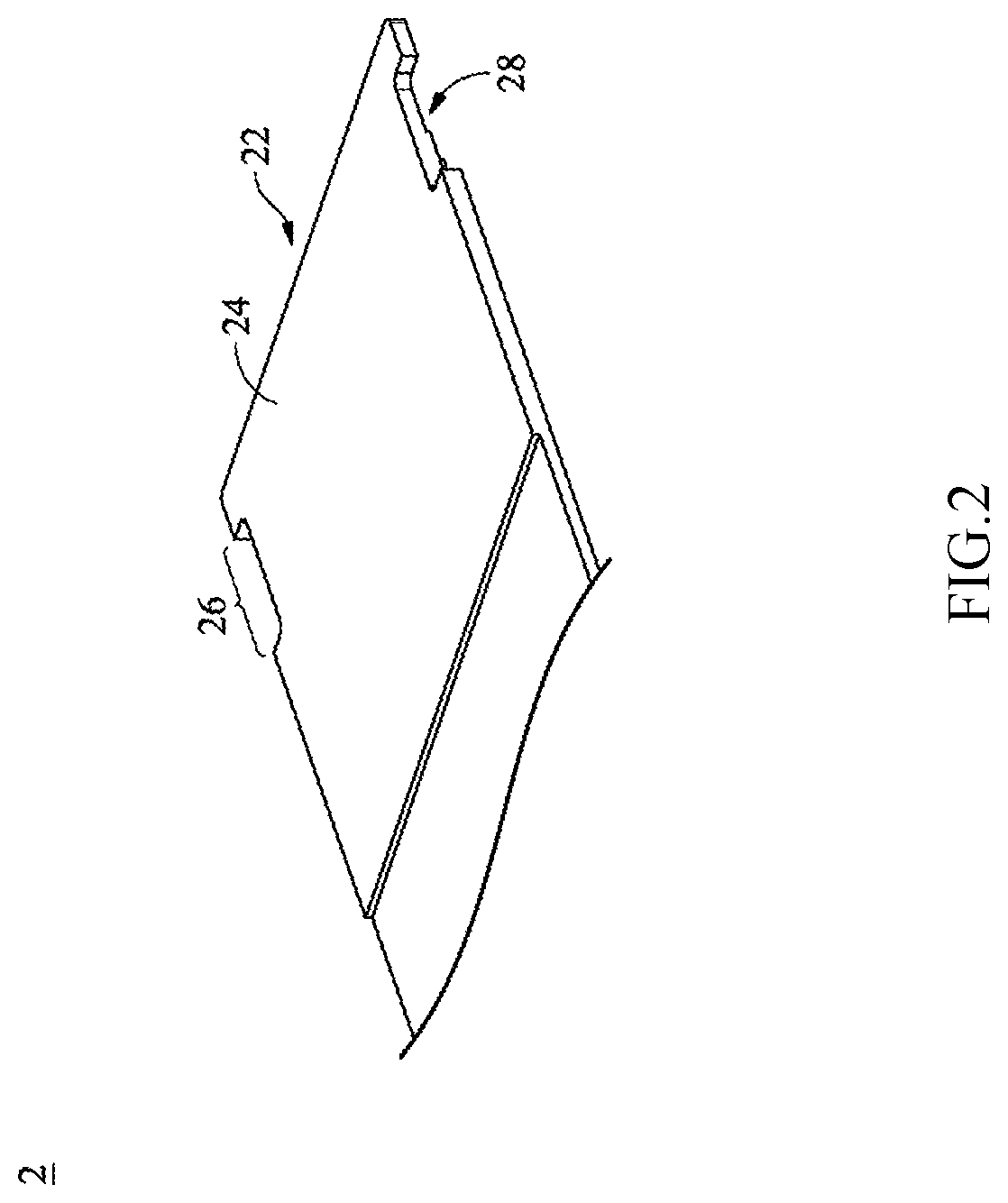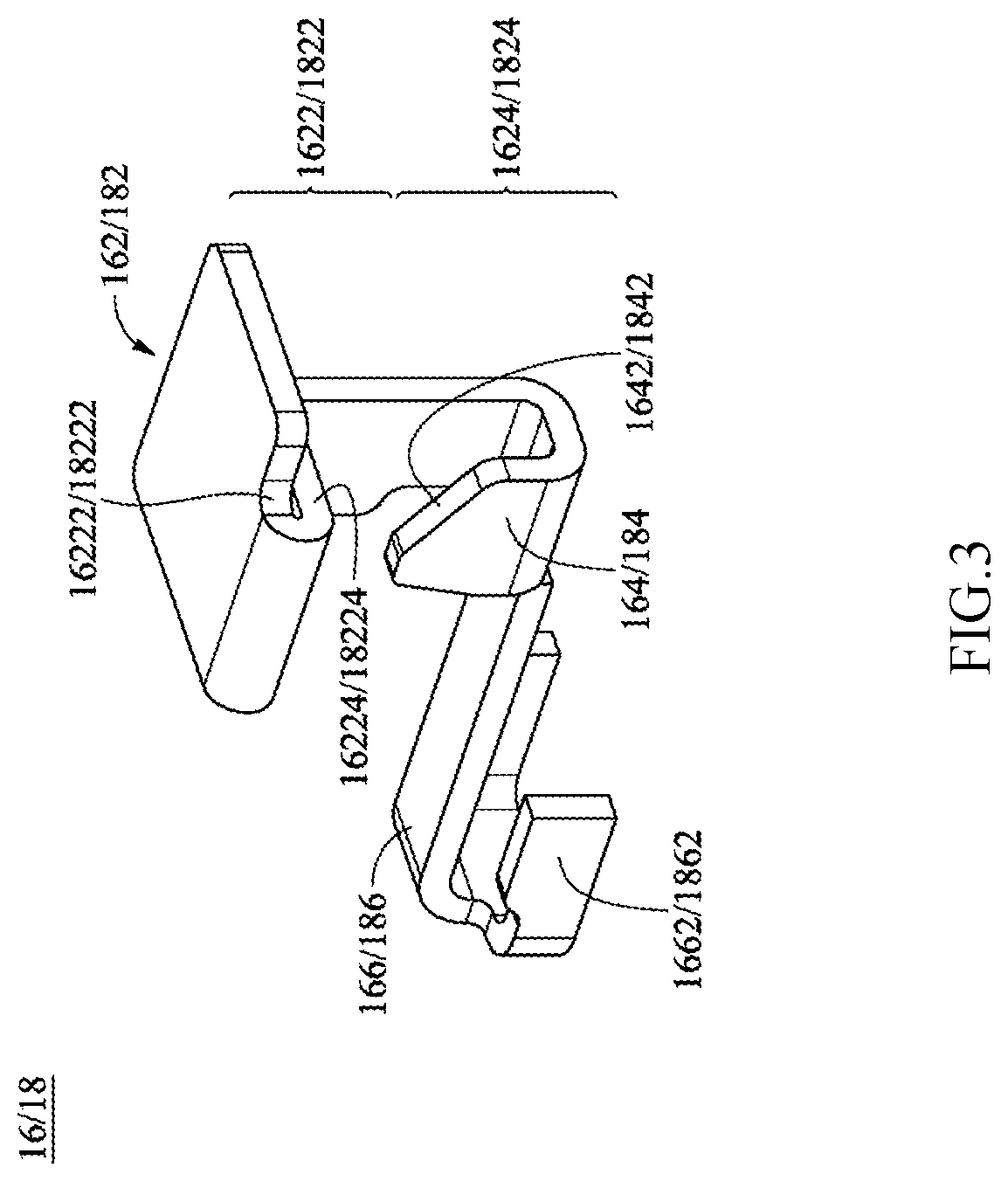Connector that automatically latch-locks a flat conducting wire
a technology of conducting wire and automatic latching, which is applied in the direction of coupling/case, coupling device connection, electrical apparatus, etc., can solve the problem that the design engineer may not be able to determine where to dispose of indented notches on the conducting wire, and the user may misjudgment that the latching-locking has been completed
- Summary
- Abstract
- Description
- Claims
- Application Information
AI Technical Summary
Benefits of technology
Problems solved by technology
Method used
Image
Examples
Embodiment Construction
[0016]In order to better understand this invention, its content and the efficacy it can achieve, the invention is explained with the attached figures, and the following is a detailed description of the embodiments. The schematics used in the drawings are only for the purpose of illustration and complementation. It is not intended to be a true proportion and precise configuration of the implementation of the present invention. Therefore, it would not be proper to interpret the proportion and configuration of the illustrations as such, and to limit the scope of rights and actual usage of this invention.
[0017]The advantages and characteristic features of the present invention as well as the achieved technology use the reference implementation and all the attached figures to conduct a more in depth description and be more easily understandable; moreover the present invention can be realized in different shapes, therefore it should not be understood as limited to the implementation descr...
PUM
 Login to View More
Login to View More Abstract
Description
Claims
Application Information
 Login to View More
Login to View More - R&D
- Intellectual Property
- Life Sciences
- Materials
- Tech Scout
- Unparalleled Data Quality
- Higher Quality Content
- 60% Fewer Hallucinations
Browse by: Latest US Patents, China's latest patents, Technical Efficacy Thesaurus, Application Domain, Technology Topic, Popular Technical Reports.
© 2025 PatSnap. All rights reserved.Legal|Privacy policy|Modern Slavery Act Transparency Statement|Sitemap|About US| Contact US: help@patsnap.com



